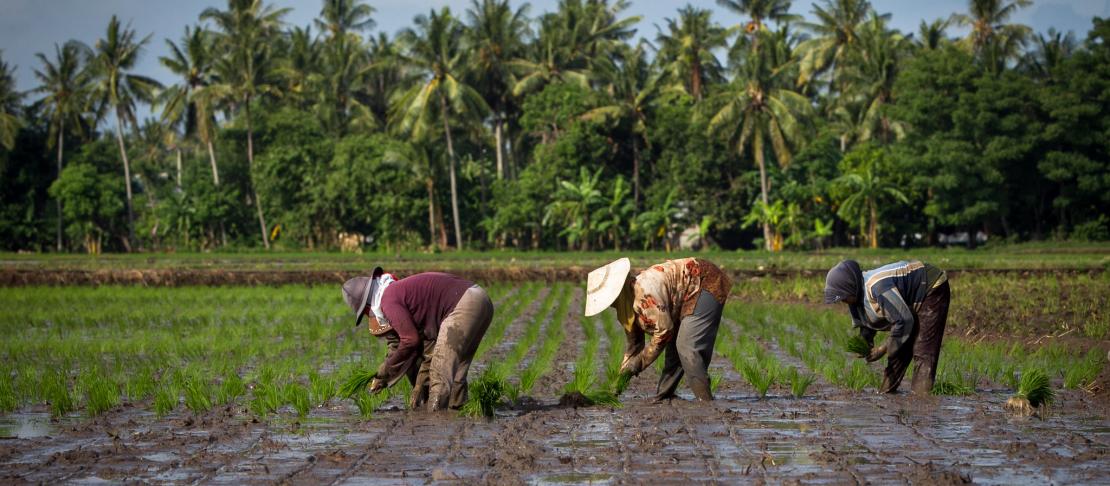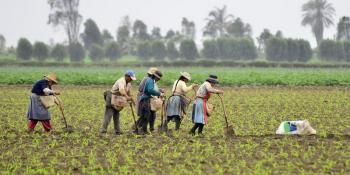Agricultural mitigation can increase social equity, but only for some

Introducing technologies often increases the number of tasks on farms, and the new tasks usually fall to women who assume the new labor requirements. Mitigation practices, like mechanization, can free up women’s time but that is not always a good thing for all women concerned.
It is crucial to determine how the pendulum will swing and for what groups. Understanding the dynamics between societal equity, agriculture, and emission reduction efforts enable effective use of social initiatives alongside technical low-emissions development (LED) interventions. There is a growing incentive to better understand gender dynamics underlying women's participation in agriculture to reduce the risk of reinforcing gender inequalities.
Rice cultivation mitigation options
Conventional transplanting is responsible for a significant portion of total labor consumption in rice production, of which women contribute significantly. Shifting to a mechanized seeding or transplanting practice could save labor time and lower greenhouse gas (GHG) emissions.
A recent journal article collected evidence of women’s labor contributions to rice cultivation in India and the potential to reduce their time spent in the field transplanting rice through implementing new seeding and transplanting practices. The study examined how shifting rice production from conventional transplanting (CTR) to direct-seeded (DSR) or machine-transplanted rice (MTR) affected women’s time in the field and if they reduced emissions.
The potential to reduce women’s labor and GHG emissions varies by agro-ecological region, level of input use, and women’s participation in cultivation. The feasibility of a gender-responsive GHG mitigation strategy depends on the level of adoption, which relies on social, economic, and political dynamics. However, mechanization also poses a potentially harmful outcome for some women.
Of the 97 million women who work in India’s rural labor force, over 60% work in agriculture. For many, manual rice transplanting is one of the few or only opportunities for paid work. Mechanized rice transplanting could be disastrous for these women and their families. There is an urgent need for place-based research to gain an understanding of the context and solutions to support working women in climate change mitigation interventions.
On the other hand, 37% of women in the rural labor force provide unpaid family labor for their household. Many of them have limited decision-making power over resources and bear the brunt of reproductive and household work, in addition to their contributions to agricultural production. The prospect of labor-saving technologies to these women could be attractive and valued.
Women’s passions and time are often less valued than men’s, which means that investment in labor-saving technologies and practices prioritize men’s labor time. Women’s benefits from these practices can be limited by gender roles that discourage them from performing tasks, like operating machinery, or social norms that restrict their physical mobility and social interactions, and expectations of women’s regard for male authority.
Mechanization has the potential to reduce emissions from rice production, save labor time and cost, and other economic and environmental benefits. However, it also can immensely harm a large group. Further research and development interventions are needed to know how best to address and mitigate these impacts. Identifying how best to address the risks of negative social impacts related to the introduction of mechanized seeding and transplanting will be essential to inform policy and to scale these technologies.
Read the article: Gendered impacts of greenhouse gas mitigation options for rice cultivation in India



